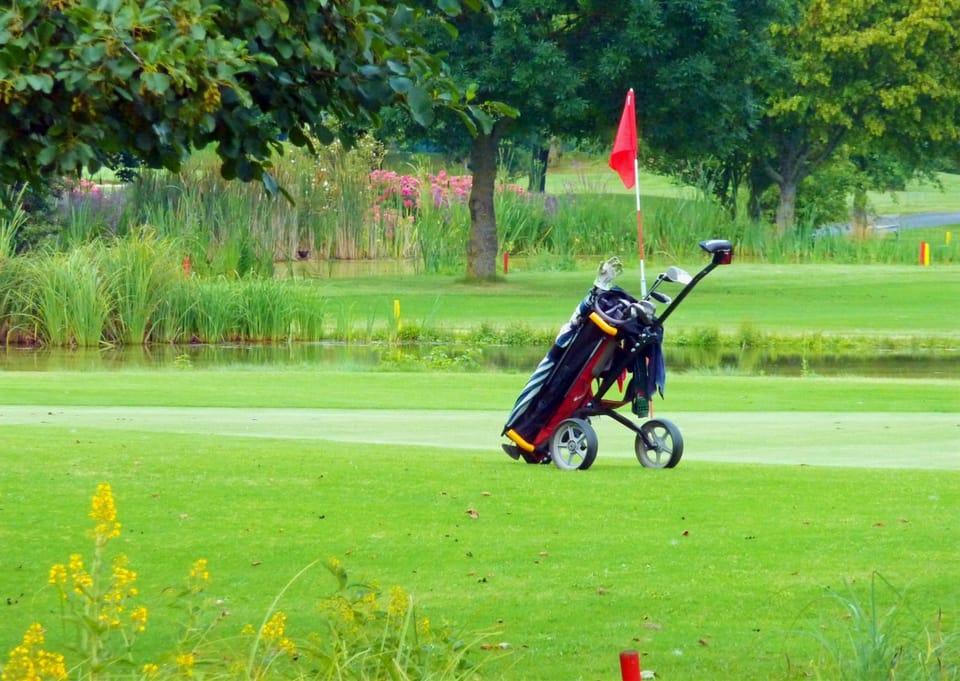Getting Your Kids Into Golf: A Parent’s Guide to Growing the Game and Building a Lifelong Bond

Golf isn’t just a game—it’s an investment in patience, confidence, focus, and quality time. If you’re a parent looking to introduce your kids to the sport, you’re not only setting them up for a hobby they can enjoy for a lifetime—you’re also creating opportunities for connection, growth, and resilience.
But like any sport, the early experience matters. A bad introduction to golf—one that’s too rigid, too technical, or just plain boring—can turn kids away for good. A good one? That can hook them for life.
Here’s how to get your kids into golf the right way—so they love it, stick with it, and maybe even beat you someday.
Why Golf Is Great for Kids
Golf offers something unique among youth sports:
- No age cutoff: Your child can play from age 3 to 93.
- Life lessons: Golf teaches honesty, perseverance, patience, and emotional control.
- Individual and social: Kids can enjoy it alone or with friends—and there’s no bench.
- Quality family time: A few hours on the course means uninterrupted connection.
Plus, golf offers scholarship opportunities and access to mentorship programs like The First Tee, which blend golf with character development.
Start With Fun, Not Form
Here’s your #1 rule: make it fun first, technical later.
If you introduce kids to golf with rules, strict etiquette, and swing mechanics, you’ll lose them. Let them explore the game at their own pace.
- Let them hit balls at the range without over-coaching.
- Use plastic clubs at home to play mini-games in the backyard.
- Have putting contests with candy rewards.
- Let them ride in the cart, grab snacks, and hit a few shots during your round.
The key is to make golf feel like play—not pressure.
Choose the Right Equipment
You don’t need to spend big bucks, but the wrong gear can make things frustrating. Here’s what matters:
- Use junior clubs (brands like U.S. Kids Golf, Callaway XJ, or Wilson Profile) sized to your child’s height—not just cut-down adult clubs.
- Start with a driver, wedge, and putter. That’s all they need at first.
- Use foam or whiffle balls at home to build confidence in a safe, low-pressure setting.
The right club length and weight can help kids develop proper mechanics naturally—without needing technical swing instruction.
Keep Sessions Short and Sweet
Young kids have short attention spans. A two-hour range session might sound like fun to you, but for them, it’s overload.
Try this:
- A 15- to 30-minute session with a clear goal or game.
- Mix hitting, putting, and short games to keep it dynamic.
- End while they’re still having fun, not when they’re melting down.
You want them asking, “Can we go again tomorrow?”
Make It Social
Golf can be lonely—unless you make it social. Kids thrive in peer environments.
- Enroll them in junior clinics or group lessons.
- Invite friends to come along for mini-golf or a short course.
- Join a local youth golf league (like PGA Jr. League) to give them team-based experiences.
When kids associate golf with laughter and friendships, they’re more likely to keep coming back.
Use the Course Strategically
Taking your child on the course can be a great experience—or a frustrating one. Here’s how to set them up for success:
- Play during off-hours (late afternoons or early mornings) to avoid pressure and slow play.
- Play shorter formats like 3 or 6 holes, scramble style, or best ball.
- Use kid-friendly tees or move them up. Let them see success early.
- Don’t keep score—unless they want to. The goal is confidence and comfort, not performance.
Bonus: let them drive the cart for a few holes if they’re old enough. It’s a guaranteed motivator.
Lead by Example
If you love golf, your kids will notice. They’ll want to be part of what excites you. But how you carry yourself on the course matters just as much.
- Model good sportsmanship. Don’t curse your missed putts or throw clubs.
- Celebrate effort, not just outcome.
- Make golf a source of calm, not stress. Show them it’s okay to laugh off a bad shot.
Kids mirror what they see. If you’re having fun, they will too.
Be Patient With Progress
Some kids will take to golf instantly. Others may be slow to warm up or show inconsistent interest. That’s okay.
Don’t force it. Don’t lecture. And don’t make them feel like they’re disappointing you if they don’t love it right away.
Instead, let golf be an open door—always there for them, without pressure. They may walk through it in their own time.
Final Thoughts: It’s Bigger Than Golf
Getting your kids into golf is about more than learning a sport. It’s about creating shared experiences, teaching lifelong values, and giving them a game they can play anywhere, with anyone, for the rest of their life.
So go easy. Have fun. Share the joy. And one day—maybe when you’re walking the back nine together, just the two of you—you’ll realize it was never just about the game.
